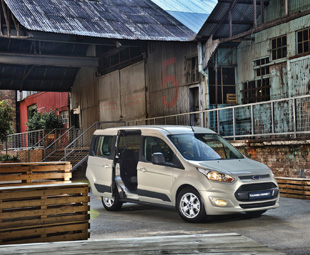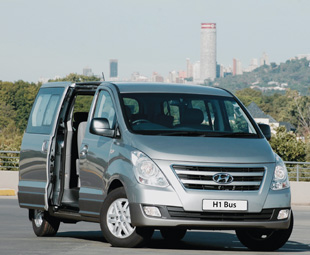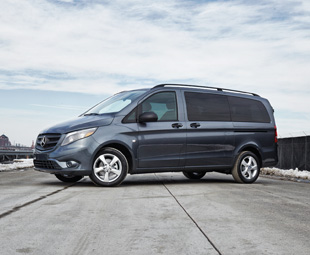LCV market steers on steadily

The past year has seen a surfeit of light commercial vehicles (LCVs) being launched, which reflects the increasing growth of this segment, the demands of consumers and their buying habits. Ziphorah Masethe explores.
LCVs have gained wide popularity over the years within the transport, construction and agricultural industries and among private individuals, and make up a large percentage of overall vehicle sales.
Covering a broad range of services, this segment’s popularity is a result of the vehicles being light, fast and agile – among other factors.
In a report from the National Association of Automobile Manufacturers of South Africa (Naamsa), LCVs (including bakkies and minibuses) reflected a decline in total sales from 15 143 units sold in February last year, to 13 161 units sold during February 2016. (This represents a decrease of 1 982 units, or a 13,1 percent decrease in sales in this segment.)
 Ford says that it forecasts that the decrease will be five or six percent less than the previous year, staying lower than other segments.
Ford says that it forecasts that the decrease will be five or six percent less than the previous year, staying lower than other segments.
The LCV market, for both business and private market sales, is essentially shaped by consumer interest and buying power. “The double-cab bakkie market, specifically, seems to be growing quite strongly and within the market itself there is definitely a move from passenger cars to the double-cab segment,” points out Volkswagen divisional head for commercial vehicles, Jaco Steenkamp.
Riaan Esterhuysen, Toyota product communications manager, says: “As is common in a highly competitive market environment, demand often shifts to the newest entrant and, considering Hilux’s rich sales history in South Africa and notable market performance in the past, we expect the newcomer to capture a large percentage of the one-tonne market. However, considering the global economic conditions, we are not expecting the launch of the new Hilux to significantly grow the segment volume.
“Export volume is subject to the same global market conditions, and, therefore, is forecast to remain at a stable level,” he adds.
Recently, Hyundai launched the upgraded H-1 – the country’s leading large multi-purpose vehicle, with applications as a family vehicle, as well as commercial use.
Despite LCVs being subject to harsh operating conditions, Hyundai also announced an outstanding improvement in its warranty. A seven-year/200 000 km on its vehicles, from the previous five-year/150 000 km warranty, reflects the brand’s confidence in its engines. “Our warranty burn rate is very low and gives the customer a greater peace of mind. This is a testament of our trusted engines,” says Deon Sonnekus, Hyundai’s general manager of corporate communications.
 Ford, which also manufactures locally, points out that the current economic climate has had some effect on its local production. Dale Reid, LCV brand manager at Ford says: “The exchange rate fluctuation and rand devaluation also affects locally built vehicles.”
Ford, which also manufactures locally, points out that the current economic climate has had some effect on its local production. Dale Reid, LCV brand manager at Ford says: “The exchange rate fluctuation and rand devaluation also affects locally built vehicles.”
New vehicle exports during February 2016 indicated a slight decline when compared to February last year. This could also be as a result of factors such as the current drought experienced in parts of South Africa and the pressure on mining.
“Imports have been negatively affected by the current rand devaluation, which makes it more expensive to import vehicles. This will have a negative impact on retail prices and contribute to the decline in sales,” says Nicolette Lambrechts, vice-president of Mercedes-Benz Vans Southern Africa
She adds: “People are looking at vehicles that can save them money on total cost of ownership, and companies are looking at buying off balance sheet, or leasing.”
The weakening rand is definitely going to have an impact on new vehicles sales, according to WesBank CEO Chris de Kok. “The movement of the rand will be key for the performance of new-vehicle sales in South Africa.
“A deteriorating currency will force manufacturers to increase prices more aggressively. This will push new-vehicle price inflation well outside that of the headline consumer price index, thus sending more buyers to the used-car market,” he adds.
 Brian Olson, vice president of vehicle sales, service and marketing at General Motors Sub-Saharan Africa, says: “Exports have been affected as a result of low commodity prices, for example, in countries such as Angola and Nigeria. Used vehicle sales tend to increase when there is a downturn in the economy. Based on this historic observation, we would expect the same to happen this year.”
Brian Olson, vice president of vehicle sales, service and marketing at General Motors Sub-Saharan Africa, says: “Exports have been affected as a result of low commodity prices, for example, in countries such as Angola and Nigeria. Used vehicle sales tend to increase when there is a downturn in the economy. Based on this historic observation, we would expect the same to happen this year.”
However, according to Naamsa, new vehicle exports are expected to increase in March/April following the launch of the locally assembled Toyota Hilux – with export sales resuming from March into the rest of Africa, and from mid-March into Europe.
Recent LCV launches have saturated the market with competitive options for the consumer. With the current economic crises, consumers are expected to spend sparingly, while looking for more value for money. Ford predicts the LCV segment should maintain its share of the industry, more so than passenger vehicles.
WesBank, however, predicts a ten-percent decrease in LCV segment sales, as the second half of the year is expected to be tougher, mainly as a result of accelerated price increases for new cars, as well as higher interest rates.
Ziphorah Masethe is a third-year journalism student at the Tshwane University of Technology. Her passion for writing and interest in the motoring world landed her the opportunity as the South African Guild of Motoring Journalists’ Guild Bursar for 2016. As part of the programme, Ziphorah will be deployed throughout the year to various publications, agencies, and vehicle manufacturers serving the industry. She recently spent a month with FOCUS, where she was exposed to the commercial vehicle industry.
Published by
Focus on Transport
focusmagsa




